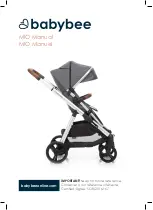
Detailed Setup
September 2013
4-9
Travel/Pressure Control (1-2-2-2)
Travel/Pressure Select—Determines if the
instrument is set up for position or pressure control.
Select Travel, Pressure, Travel with Pressure
Fallback/Auto recovery or Travel with Pressure
Fallback/Manual Recovery. If the travel sensor fails,
and Travel with Pressure Fallback/Auto Recovery is
selected, it will return to travel control when the travel
sensor starts working again. Travel with Pressure
Fallback/Manual recovery will stay in pressure control
until Travel Pressure Select is changed to Travel or
Travel with Pressure Fallback/Auto recovery. It is not
necessary to enable the Travel Sensor Alert for
Pressure Fallback to occur.
Cutoffs and Limits (1-2-2-2-2)
Cutoff Hi
Travel Cutoff High defines the high cutoff point for the
travel in percent (%) of ranged input current. Above
this cutoff, the travel target is set to 123.0% of the
ranged input current. When a Travel Cutoff High is set,
the Travel Limit High is deactivated, since only one of
these parameters can be active. Travel Cutoff Hi is
deactivated by setting it to 125.0%.
Pressure Cutoff Hi defines the high cutoff point for the
pressure in percent (%) of pre-characterized setpoint.
Above this cutoff, the pressure target is set to 123.0%.
A Pressure Cutoff Hi of 99.5% is recommended to
ensure valve goes fully open. Pressure Cutoff Hi is
deactivated by setting it to 125%.
Cutoff Lo
Travel Cutoff Low defines the low cutoff point for the
travel set point. Travel Cutoff Low can be used to
ensure proper seat load is applied to the valve. When
below the travel cutoff low, the output is set to zero or
to full supply pressure, depending upon the zero
power condition. A Travel Cutoff Low of 0.5% is
recommended to help ensure maximum shutoff seat
loading. When a Travel Cutoff Low is set, the Travel
Limit Low is deactivated, since only one of these
parameters can be active. Travel Cutoff Low is
deactivated by setting it to
−
25%.
Pressure Cutoff Lo defines the low cutoff point for the
pressure in percent (%) of pre-characterized setpoint.
Below this cutoff, the pressure target is set to
−
23%. A
Pressure Cutoff Lo of 0.5% is recommended to help
ensure maximum shutoff seat loading. Pressure Cutoff
Lo is deactivated by setting it to
−
25.0%
Change Cutoffs—Allows you to set hi and lo
cutoffs. When a cutoff is set the corresponding travel
or pressure limit will be disabled.
Travel Limit Hi—Defines the high limit for the
travel in percent (%) of ranged travel. It is the
maximum allowable travel (in percent of ranged travel)
for the valve. During operation, the travel target will
not exceed this limit. When a Travel Limit High is set,
the Travel Cutoff High is deactivated, since only one of
these parameters can be active. Travel Limit High is
deactivated by setting it to 125.0%
Travel Limit Lo—Travel Limit Low defines the
low limit for the travel in percent (%) of ranged travel.
It is the minimum allowable travel (in percent of ranged
travel) for the valve. During operation, the travel target
will not exceed this limit. When a Travel Limit Low is
set, the Travel Cutoff Low is deactivated, since only
one of these parameters can be active. Travel Limit
Low is deactivated by setting it to
−
25.0%.
Change Travel Limits—Allows you to set hi and
lo travel limits. Setting a travel limit will eliminate the
corresponding Tvl/Press Cutoff.
Pressure Control (1-2-2-2-3)
Pressure Range Hi—The high end of output
pressure range. Enter the pressure that corresponds
with 100% valve travel when Zero Power Condition is
closed, or 0% valve travel when Zero Power Condition
is open. This pressure must be greater than the
Pressure Range Lo.
Pressure Range Lo—The low end of the output
pressure range. Enter the pressure that corresponds
to 0% valve travel when Zero Power Condition is
closed, or 100% valve travel when Zero Power
Condition is open. This pressure must be less than the
Pressure Range Hi.
End Point Pressure Control (1-2-2-2-5)
Note
End Point Pressure Control is only
available for instrument level ODV.
End Pt Control Enab— Select Yes or No. End
Point Pressure Control allows the digital valve
controller to pull back from saturation of the pneumatic
output after reaching the travel extreme. Rather than
having the instrument provide full supply pressure
(saturation) continuously at the travel extreme, the
digital valve controller switches to an End Point
Pressure Control where the output pressure (pressure
controller set point) to the actuator is maintained at a
certain value. This value is configured through the
4
Содержание Fisher FIELDVUE DVC6000
Страница 2: ......
Страница 22: ...DVC6000 Digital Valve Controllers September 2013 1 12 1 ...
Страница 82: ...DVC6000 Digital Valve Controllers September 2013 4 22 4 ...
Страница 94: ...DVC6000 Digital Valve Controllers September 2013 5 12 5 ...
Страница 139: ...Loop Schematics Nameplates September 2013 B 1 B B Appendix B Loop Schematics Nameplates B ...
Страница 161: ......
















































